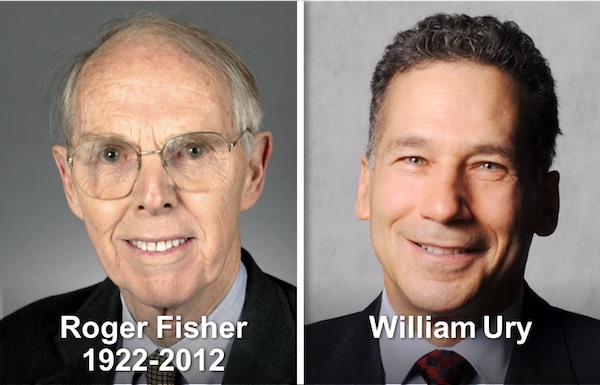While to the general public, The Art of the Deal may be the best known book on negotiation, to anyone who needs negotiation to be a sustainable part of your professional toolkit, the first and best book to start with has to be ‘Getting to Yes‘ by Roger Fisher and William Ury. Indeed, for any manager or professional, this has to be one of the dozen most important books you can read.
Negotiation is conflict conducted in a civilised manner. And what Fisher and Ury tell us is that you are always going to be more successful if you carry it out with strong moral principles. They set out four powerful principles. But it is, perhaps, their solution to one of the biggest problems that negotiators face, which is their biggest contribution to doing a good deal.

Roger Fisher
Roger Fisher was born in 1922, and graduated from Harvard College in 1943, just before the United States entered the War. Fisher flew meteorological reconnaissance planes and returned to civilian life to complete a law degree at Harvard.
He then spent some time in Paris working on the European post-war recovery Marshall Plan, before returning to the States to join a Washington law firm. There he had the chance to present cases to the Supreme Court.
In 1958, he returned to Harvard Law School as a member of faculty, being appointed professor in 1960. There, Fisher became increasingly interested in how people resolve disputes, having lost too many friends during the War. So, in 1979, he and Ury co-founded the Harvard Negotiation Project.
Fisher spent a lot of time working on some of the biggest negotiations in global politics, including the Camp David summit between Israel and Egypt, and in South Africa, as Apartheid was finally ending. When not travelling, mediating and advising, he continued to teach, both at Harvard and many other prestigious institutions, as well as writing articles and books. In 1984, he founded the Conflict Management Group, which later merged with the Mercy Corps.
In 1992, Fisher formally retired as Professor and became an emeritus professor, continuing to teach and write into his 80s. Roger Fisher died in 2012.
William Ury
William Ury was born in 1953. He studied Social Anthropology at Yale and went on to research his PhD at Harvard. In 1997, Fisher happened to read Ury’s research paper on the Middle East peace negotiations, and was impressed. He sent a copy to the US Assistant Secretary of State leading the negotiations, and invited Ury to work with him. They were to have a long and fruitful working relationship.
Working together in the Harvard Negotiation Project that they co-founded allowed the two to help each other develop their thinking and the 1981 book, ‘Getting to Yes‘ encapsulated their thinking at the time. It rapidly became a best-seller and remains so today. Both have written numerous additional books since.
Ury set up the Nuclear Negotiation Project in 1982 and also worked as a mediator and negotiation advisor alongside his teaching. In 2007, he also founded Abraham’s Path, to start on the journey of lasting Middle East peace. You can hear him speak about it at TEDx below.
Principled Negotiation
In ‘Getting to Yes‘, Fisher and Ury set out two overarching beliefs for Principled Negotiating:
- Participants are problem solvers
- The goal is a wise outcome reached efficiently and amicably
They also set out four essential principles that make negotiations as effective as possible; especially when both parties adhere to them:
- Separate the people from the problem
- Focus on interests, not positions
- Invent options for mutual gain
- Insist on using objective criteria
The BATNA
Perhaps the best known concept from the book is the idea of a BATNA – the Best Alternative To a Negotiated Agreement. If you aren’t able to reach agreement through the negotiation you are in now, what is the best alternative available to you?
That’s your BATNA.
If you cannot reach a deal in your negotiation that is better than your BATNA, then any deal you agree to represents an incremental loss. So you should, at that point, walk away.
The Circle Chart
Another great tool Fisher and Ury offer in ‘Getting to Yes‘ is the Circle Chart. We wrote about it in an earlier Pocketblog.
More on Negotiation
Another earlier Pocketblog article about negotiation is Deborah Kolb: Shadow Negotiation. Kolb is a collaborator of Ury’s, at Harvard Law School’s Project on Negotiation.
William Ury at TEDx
In this talk, called The Walk from ‘No’ to ‘Yes’, William Ury offers a way to create agreement in even the most difficult situations.
[ted id=1017]
